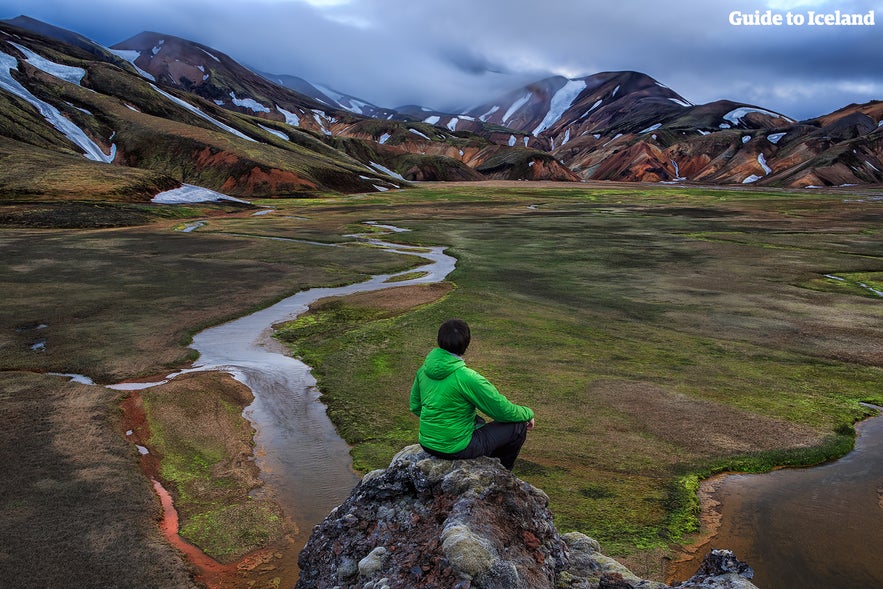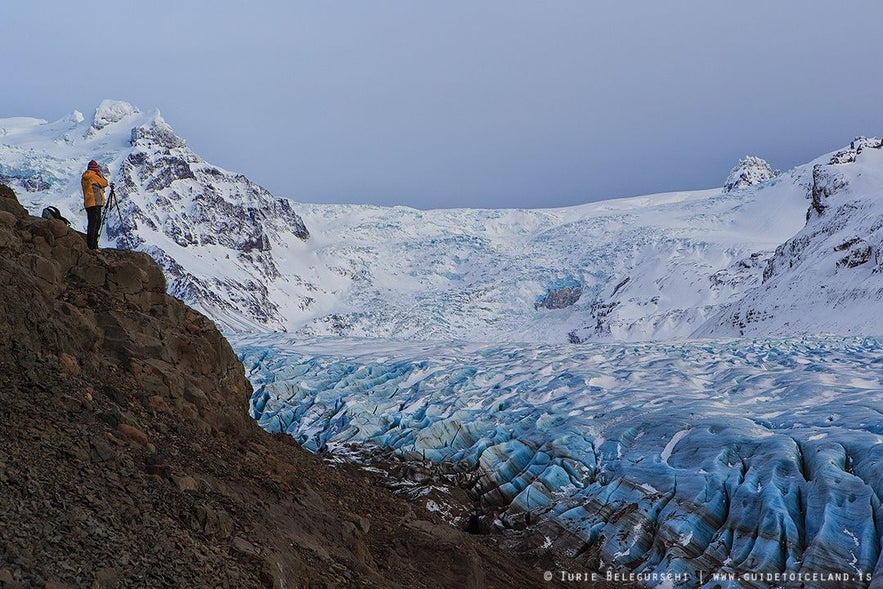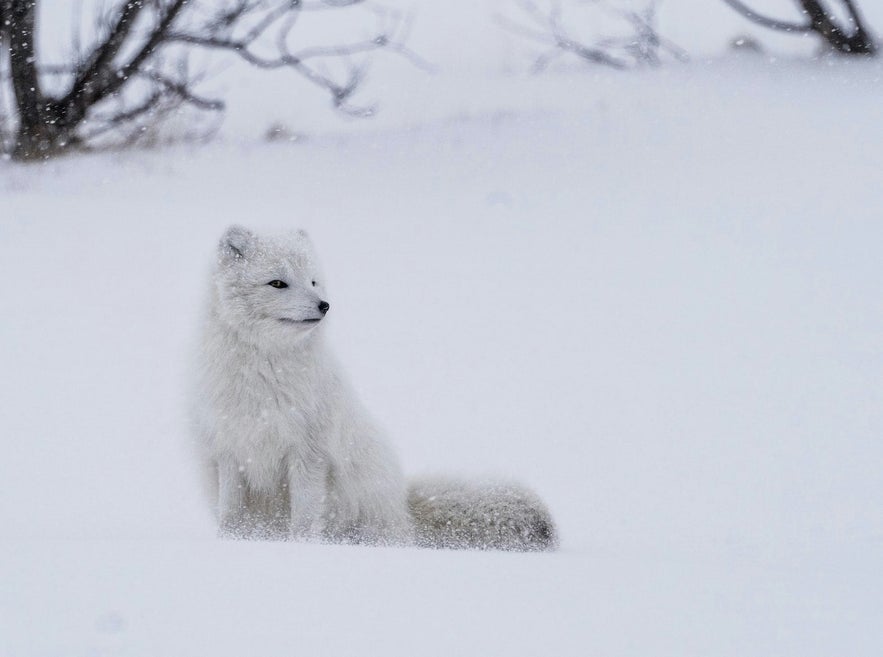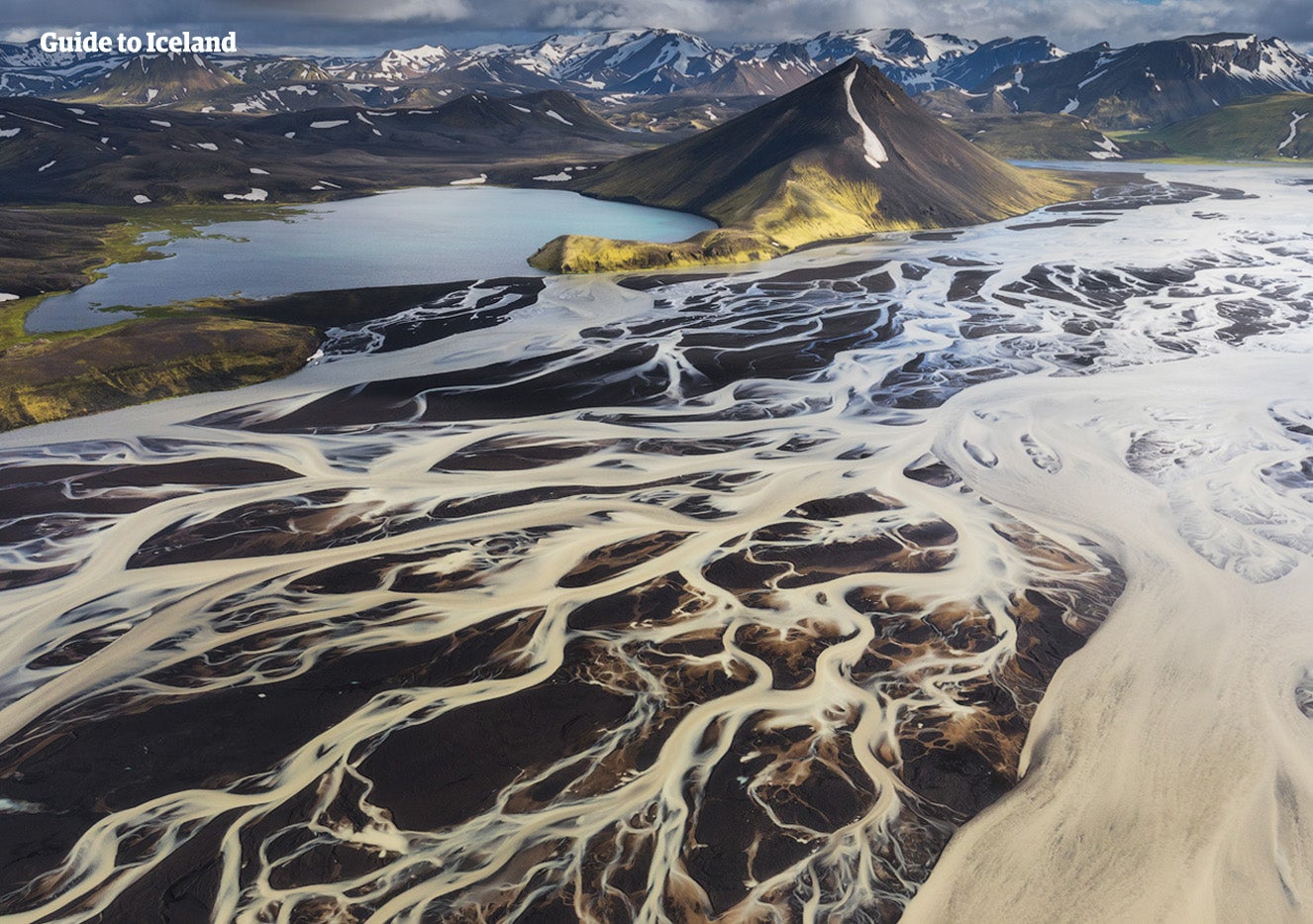Discover if Iceland is dangerous in this guide to local conditions, weather hazards, and terrain risks. Learn about wildlife, including sand snakes, and how to stay safe by being a well-informed traveler.
Why is Iceland so dangerous? The extreme contrasts in the weather and nature are unlike anything most tourists have ever experienced. As a result, several tourists have sadly died in Iceland. Many instances could've been prevented if people had been more aware of their location and the possible dangers that Icelandic nature can hold. That is why it's so important to be prepared when traveling around Iceland, especially if you are on a self-driving tour.
Why You Can Trust Our Content
Guide to Iceland is the most trusted travel platform in Iceland, helping millions of visitors each year. All our content is written and reviewed by local experts who are deeply familiar with Iceland. You can count on us for accurate, up-to-date, and trustworthy travel advice.
The country is often called "the land of fire and ice," and that name should not be taken lightly. In light of recent fatal accidents taking place at one of Iceland's most popular tourist destinations, Reynisfjara Beach, we compiled the main dangers in Iceland that tourists and locals should keep in mind.
We want to help make your trip to Iceland an incredible and safe adventure. We hope to inform you of what to be aware of and to prepare for, many of the dangers inherent to Iceland can be avoided and accidents mitigated.
Before traveling to Iceland, make sure you read up on how to drive in Iceland safely before renting a car and inform yourself about the Icelandic search and rescue teams. Additionally, always be sure you leave your travel plan with the search and rescue teams and avoid making preventable mistakes so you don't need to waste their valuable time. We want our travelers to explore safely and return in one piece.
Is Iceland Safe to Visit?
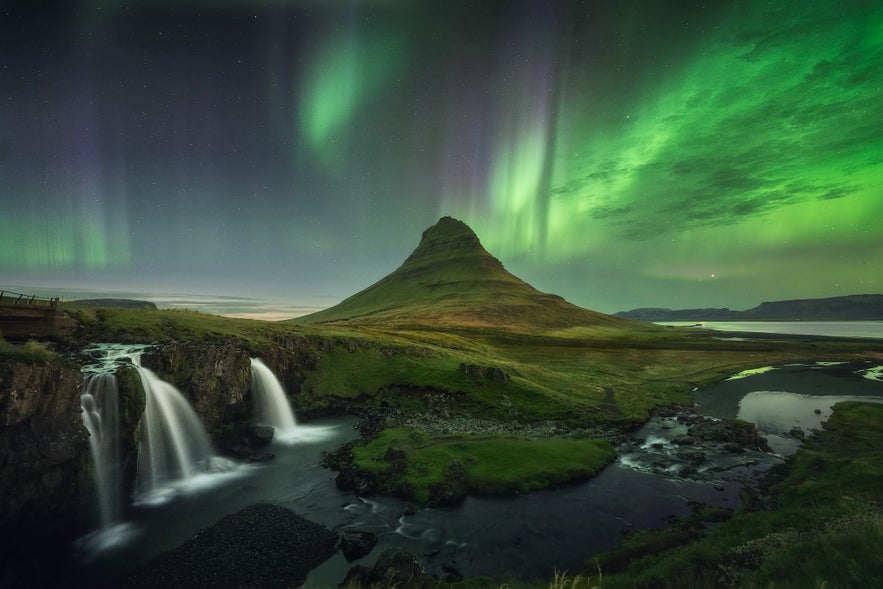 Iceland is widely recognized as the safest country in the world to visit! It consistently ranks high in global safety indexes, thanks to its low crime rates, friendly locals, and well-maintained infrastructure.
Iceland is widely recognized as the safest country in the world to visit! It consistently ranks high in global safety indexes, thanks to its low crime rates, friendly locals, and well-maintained infrastructure.
However, while Iceland is generally safe, its natural environment can pose challenges. Extreme weather, powerful ocean currents, and unpredictable terrain like glaciers, volcanoes, and hot springs require visitors to exercise caution and follow safety guidelines.
By staying informed, respecting nature, and preparing for the elements, you can enjoy a safe and unforgettable adventure in Iceland!
Dangerous Beaches in Iceland

Some of Iceland's beaches are incredibly popular tourist destinations, especially the Reynisfjara black sand beach on the southern coast of Iceland. Millions of people have visited this stunning area, where you can admire the pitch-black sand, the linear basalt columns, and the impressive waves of the North Atlantic Ocean.
These waves are highly unpredictable and, therefore, one of Iceland's dangers that is most often underestimated by travelers. They can be very high and large, and the undercurrent in the ice-cold ocean is powerful.
What's known as "sneaker waves" can also occur. This is when a single wave is much larger than the others, resulting in it sneaking further up onto the beach. Additionally, there are many large rocks with sharp edges in the area where the waves crash.
Reynisfjara is a popular stop in many South Coast tours. It is a good option to book a guided tour to maximize your safety while exploring the beautiful (but yet dangerous) black sand beach. In this minibus tour from Reykjavik, you will be guided by a professional and fun English-speaking guide, and you get to combine Reynisfjara with more fun activities and attractions!
Visually, the waves look spectacular, so perhaps it comes as no surprise that tourists (and locals) can spend hours watching them and taking pictures and videos. The danger lies in getting too close to the waves. Even if it's a nice and calm day and you feel like you're at a safe distance, a big wave can come along and sweep you out to sea.
Someone gets caught by the waves almost every day. Whereas most people just get slightly wet clothes or shoes, some have their camera equipment ruined, and tragically, there have even been a few tourist deaths in Iceland as a result.
Djupalonssandur on the Snaefellsnes peninsula is another popular black sand beach where people have gotten caught in the surf, although luckily, no one has died there so far.
Make sure, under all circumstances, not to turn your back to the sea or get lost in taking a selfie. The waves are much stronger than you'd expect, and heeding these warnings can be the difference between life and death.
The Unstable Icebergs in Glacier Lagoons
Jokulsarlon Glacier Lagoon is one of Iceland's most popular destinations, and it's not hard to understand why. Impressive icebergs float around in a large lagoon near Europe's largest glacier, Vatnajokull.
In wintertime, you can catch the northern lights dancing overhead, sometimes reflected in the lagoon and the ice in it. This is a photographer's heaven and provides an array of stunning aurora photos.
When you go to the lagoon, you'll see signs that forbid people to walk on the ice in the lagoon. There are usually some tour guides nearby who tell people not to walk on the ice.
Nevertheless, some people are either are oblivious to the danger or choose to ignore it. They'll walk on the ice (or even swim in the lagoon) to a floating iceberg. This is often done for an ever-so-precious selfie.
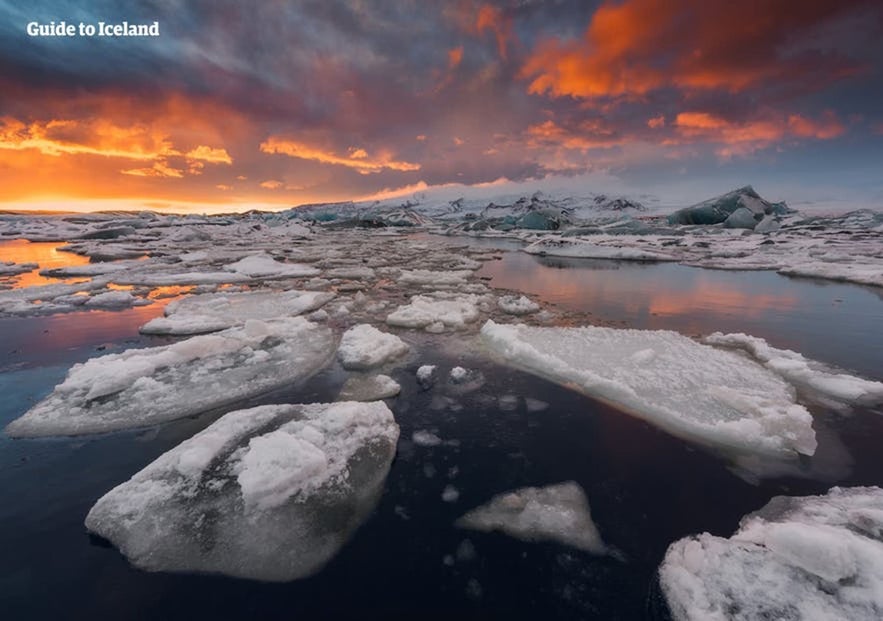
To ensure your safety while exploring Jokulsarlon, it's much safer and more rewarding to book guided Jokularlon tours, such as this zodiac boat tour, where you'll get to experience the breathtaking icebergs up close.
Although the ice may be connected to land when you arrive and looks safe to walk on, it can easily break off from the ground. If you find yourself stranded on a block of ice in the lagoon, you're in danger since the ice can tip over without warning. You might not only fall into the ice-cold water but could also find yourself trapped under the iceberg itself.
The water is so cold that people can only stay in it for a few minutes before they get hypothermia and die. The current in the calm lagoon is also powerful and can easily carry people out to sea.
Again, people tend to misjudge how stable and safe the natural attractions in Iceland are, leading to fatal incidents - what's beautiful can also be dangerous in Iceland.
- Check out these 22 Photos of the Aurora in Iceland
- See also: Northern Lights Information
Iceland's Unpredictable Weather
In Iceland, there's a saying that goes, "If you don't like the weather, wait five minutes." The weather is constantly changing here, often quite suddenly. It can change dramatically in the same place in a matter of seconds and also change drastically from one location to the next.
These sudden weather changes often make for stunning, dramatic photos; however, this is also one of the things that can make Iceland dangerous. With the vast scenery, you can see where there's rain on your right-hand side, but the sun on your left.
The weather can be dramatically different depending on your location in the country. It can be sunny and pleasant in Reykjavik, where you start your day, but a snowstorm in the Highlands, where you end your day. This means you can drive through rain, snow, sun, wind, and fog, all within the same hour or even in a matter of a few minutes! Welcome to Iceland.
Additionally, you should never underestimate the windchill factor here. This means that you can hike through the same ever-changing conditions, so ensure you pack the correct essentials for all seasons.
When the weather isn't ideal, don't worry! There are plenty of indoor activities to enjoy, such as exploring museums and galleries. With the Reykjavik city card, you'll get free access to a variety of cultural attractions and geothermal pools for 24 consecutive hours, making it the perfect way to make the most of your time in Iceland, rain or shine.
Whereas snowstorms mainly tend to take place in wintertime, they have been known to take place in the middle of summer. Snowstorms are more likely to occur in the Highlands, where you won't find much shelter or traffic.
Hiking tours in Iceland are a beautiful way to explore the country and are very popular. However, when you go hiking in Iceland, you need to be prepared for any weather, even in the summer. This is not an occasion to pack light. Bring layers of wool or fleece, and avoid wearing cotton or denim, as they get cold and lose their insulation capabilities when wet.
The most popular hiking route in Iceland is Laugavegur, named after Reykjavik's busiest shopping street. Even though it's a busy route, you can still feel like you're the only one on it.
In 2004, on a clear summer's day at the end of June, a 25-year-old Israeli man started the hike from Landmannalaugar. He was poorly dressed in sneakers, light trousers, and a light jacket. The staff at Landmannalaugar warned him not to go hiking in this outfit since the route crosses a glacier and he might get cold, but he went nonetheless.
He called the Icelandic Search and Rescue teams four hours later and reported he was utterly lost in a thick fog and getting very cold. A team of about 70 people went looking for him, but he was eventually found dead, only 0.6 miles (one kilometer) from a hut where he could've found shelter from the cold.
This is just one example of someone killed in Iceland due to insufficient clothing. Many more have frozen to death in the cold and unpredictable weather. Never underestimate how quickly the weather can turn, and always make sure that you're prepared for any kind of weather.
- Learn about What To Pack for Iceland for All Seasons
Iceland's Strong Winds
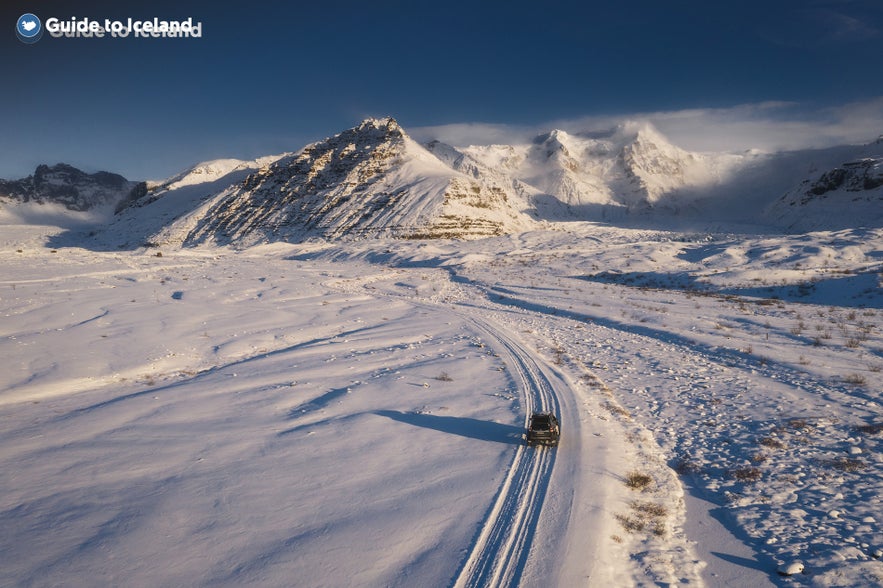
Tour providers are usually aware of any conditions that could affect your safety and cancel or reschedule tours that could put you at risk. However, it's always best to keep aware of changing conditions to ensure your safety.
In such situations, tour providers will either offer a different activity, issue a refund, or reschedule your tour to another day or time. This is common in Iceland, and tour providers are well-drilled in managing customers' safety in Iceland's ever-changing conditions.
Unfortunately, there have been cases where travelers have not heeded the warning of a red alert delivering cyclonic winds to West Iceland and the south coast. Sadly, this resulted in the death of two Chinese nationals in their twenties near the Solheimasandur DC3 plane wreck.
The best rule of thumb is not to travel if you feel unsafe in Iceland's winds. If you are driving yourself, you should always slow down to a speed that you're comfortable with or simply don't travel. Always keep up to date with Iceland's weather and road conditions daily and heed the warnings of locals who have experienced these conditions many times before.
Other Dangers in Iceland
We've listed the main dangers in Iceland. Whatever activity you plan on doing, be sure to keep all necessary information about the location before doing anything rash. Be sure to look out for information signs in the areas you are traveling as well. These will alert you to possible dangers both on the road and at various attractions around the country.
Other dangers in Iceland include falling into cracks in glaciers, getting stuck inside unstable ice caves, or burning yourself in hot springs.
Tourist Deaths in Iceland
 There have been around 75 total incidents of tourist deaths in Iceland, which is a pretty low rate given how many millions of people have visited Iceland for adventure tourism.
There have been around 75 total incidents of tourist deaths in Iceland, which is a pretty low rate given how many millions of people have visited Iceland for adventure tourism.
Kristján Hlynur Ingólfsson, a developer of geographic information systems at Statkraft in Norway, has created an interactive map highlighting locations in Iceland where tourists have died in recent years.
Motivated by curiosity during the COVID-19 pandemic, he compiled data from news reports to identify areas with higher incidences of tourist fatalities. His findings indicate that three locations in South and Southwest Iceland are particularly hazardous for visitors.
There have been several fatal incidents at Reynisfjara black sand beach, highlighting its dangerous conditions. In February 2016, a 40-year-old Chinese man stood atop the middle rock in the picture above when a sudden wave took him out to sea, where he drowned. His wife and two children were with him but unable to save him.
In 2007, a 75-year-old woman from the United States got caught in a wave and drowned. Three people jumped in to try to save her but couldn't reach her and put themselves in great danger at the same time.
Another tragedy took place in January 2017, when a German woman in her fifties was caught by a wave and washed ashore a couple of hours later. She was traveling with her husband and two children. Her son (in his thirties) also got caught by a wave but managed to return to shore alive.
In 2013, a four-year-old girl ran straight towards the waves, but fortunately, a guide reacted quickly and managed to run after her and swiftly pick her up before the next wave.
An accident occurred in 2022 when an elderly man in his 80s was swept away by a wave into the ocean. All of these incidents took place on nice and sunny clear days, so you can imagine what the waves can be like in the middle of winter when it can be stormy and snowing. So, please take extra care when you go to Reynisfjara and any other beach in Iceland.
There have been a few other incidents after that. The Coast Guard's helicopter was called out in November 2023 because a man fell off the rocks when he was hiking on Reynisfjall. In September 2024, six tourists got trapped in a cave in Reynisfjara.
Now there are traffic lights by Reynifjara that everyone should abide by. It warns people of the sneaker waves, which have been by bar the deadliest natural attraction in Iceland.
During the summer of 2024, there was a fatal accident in an insecure ice cave in Vatnajokull glacier.
Remember never to go hiking on a glacier or enter an ice cave unless you're with someone who knows the area and the landscape extremely well. Only join in these activities under the supervision of professional guides. You can do that by booking guided ice cave tours.
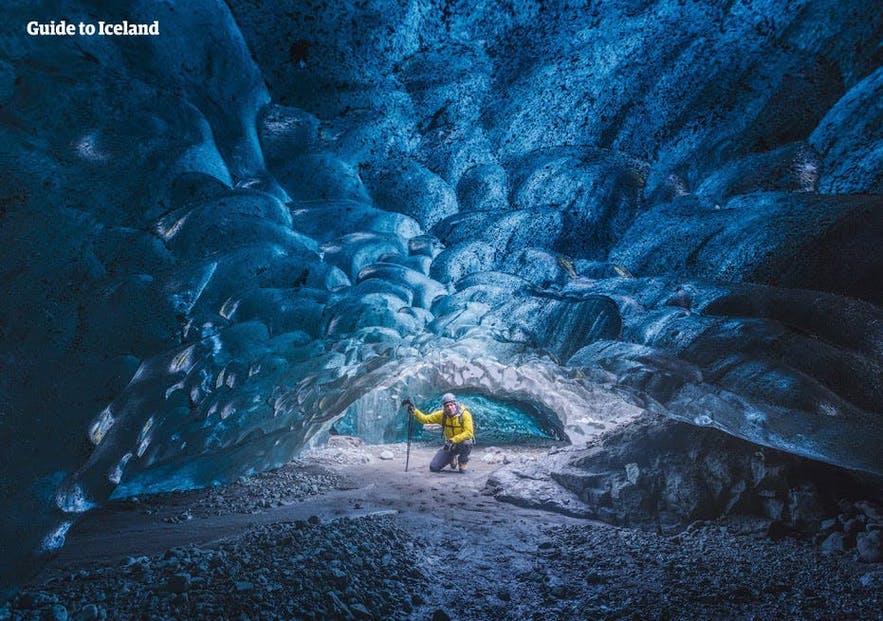
Be careful around hot springs, and don't step too close; you may not fall in, but the surrounding mud can be just as hot, and your feet could sink into it.
Take note that off-road and off-track driving is illegal in Iceland. The tracks can sometimes be hard to see but are still regarded as roads. If you can't see a clear track, then you're driving off-road, and you're both damaging the local nature and possibly putting yourself at significant risk (at the risk of a hefty fine, at the very least).
Driving in the Highlands requires a four-wheel drive vehicle. Do not attempt to drive in the Highlands with a low-clearance car that doesn't have a four-wheel drive; it won't end well but rather expensively. Your car will most likely get stuck, and you may have to wait a long time before receiving help (as well as paying for the damages to the vehicle).
Be careful when driving in Iceland, as there are many single-lane bridges. If you have an accident or get stuck somewhere, it tends to be a long way to the nearest gas station, police station, or hospital.
Although Iceland is a volcanic island, you don't need to fear earthquakes or volcanic eruptions. No one has ever been seriously harmed directly due to an earthquake or a modern-day volcanic eruption in Iceland. That is the one thing you do not have to be afraid of in Iceland.
- Find out more about Iceland's Volcanoes: The Complete Guide
- Check out The Ultimate Guide to Ice Caves in Iceland
- Learn about The 30 Best Hot Springs and Geothermal Pools in Iceland
Roads in Iceland
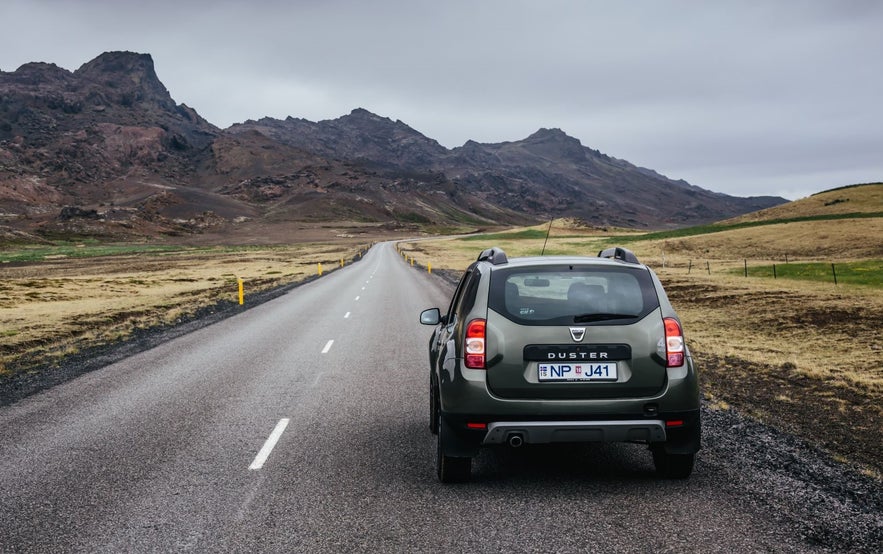 While Iceland is known for its breathtaking landscapes and unique natural wonders, navigating its roads requires special attention. The country’s vast and often remote road network offers stunning views, but it can also pose significant challenges, particularly for those unfamiliar with driving in such conditions.
While Iceland is known for its breathtaking landscapes and unique natural wonders, navigating its roads requires special attention. The country’s vast and often remote road network offers stunning views, but it can also pose significant challenges, particularly for those unfamiliar with driving in such conditions.
Most accidents involving visitors to Iceland occur on the roads. Driving here can be tricky due to weather changes, gravel roads, and narrow bridges. Tourists sometimes underestimate these conditions, leading to unfortunate incidents. It’s crucial to understand that driving in Iceland requires caution, awareness, and preparation.
Another unique aspect of driving in Iceland is the F-roads, rugged mountain paths accessible only in summer. These roads require a 4x4 vehicle and are suited for experienced drivers due to their challenging terrain. Off-roading, however, is strictly prohibited to protect Iceland’s delicate environment, and violators can face hefty fines.
To make the most of your road trip in Iceland, always follow road signs and adhere to traffic rules. Take the opportunity to fill your gas tank whenever you see a station, as distances between fuel stops in remote areas can be long. Being mindful of these precautions not only ensures your safety but also helps preserve the natural beauty of Iceland.
By staying alert and respecting the unique challenges of driving in Iceland, you can safely enjoy the journey and marvel at the country's beauty.
- Learn How to Drive Safely in Iceland
- Check out Everything You Need to Know About Road Signs in Iceland
Dangerous Animals in Iceland
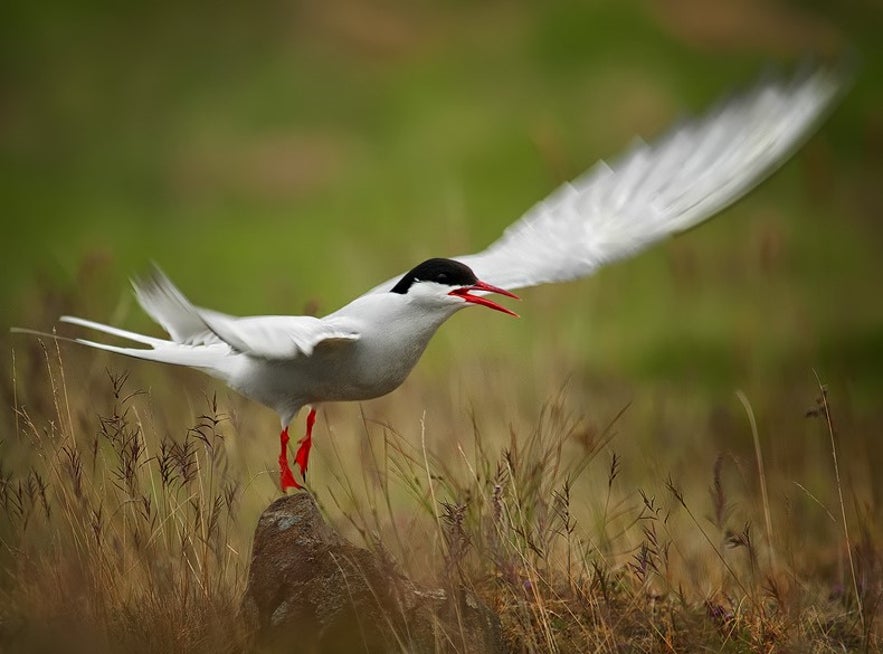 As you have undoubtedly noticed by now, most of Iceland's dangers are terrain or weather-related. Of course, that does not mean there are no dangerous animals in Iceland. For the most part, you have nothing to fear from the Icelandic animals, except perhaps some birds attacking you when they're protecting their eggs. The Arctic tern can be quite aggressive, so watch your head around them!
As you have undoubtedly noticed by now, most of Iceland's dangers are terrain or weather-related. Of course, that does not mean there are no dangerous animals in Iceland. For the most part, you have nothing to fear from the Icelandic animals, except perhaps some birds attacking you when they're protecting their eggs. The Arctic tern can be quite aggressive, so watch your head around them!
Just be careful not to hit any birds, sheep, cows, or reindeer while driving, as you may wound or kill the animals, and the crash can also harm yourself or fellow travelers.
Two of the most dangerous animals in Iceland are probably the Arctic fox and the mink. The arctic foxes are the only mammals native to Iceland and typically are not aggressive unless you try to pet one. However, with sharp teeth and a willingness to protect their young, these animals should not be underestimated due to their cute and cuddly looks.
They are known to prey on lambs and other vulnerable young animals, as well as birds and their eggs, posing a threat to native wildlife and livestock. Their adaptability and predatory nature make them a notable menace in Iceland’s fauna.
For a chance to observe these fascinating creatures in their natural habitat, check out this fox-watching tour in Hornstrandir. It’s a unique opportunity to see arctic foxes up close while exploring one of Iceland’s most remote and pristine regions.
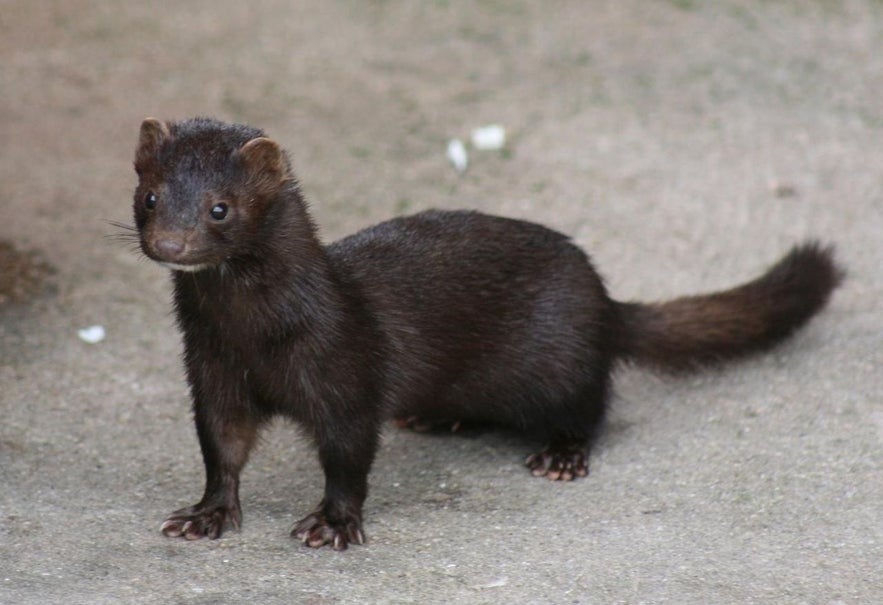
Photo from Wikimedia, Creative Commons, by Patrick Reijnders. No edits were made.
Minks were introduced to Iceland from Norway in 1931 for commercial fur farming. Although they were never meant to roam free, some escaped shortly after their arrival and quickly spread across the country. These adaptable animals thrived in Iceland’s harsh environment but caused significant harm to native wildlife and ecosystems.
Minks are believed to have played a role in the extinction of the water rail in Iceland and continue to threaten native bird populations by preying on birds and their eggs. Despite their small size, they can even kill sheep. Minks are classified as pests in Iceland due to their impact on flora and fauna.
Are There Snakes in Iceland?
Don't worry; there are no snakes in Iceland. This is one of those great trivia facts about Iceland that always surprises people. The climate is too cold for those cold-blooded snakes (no pun intended).
Sand snakes are when strong winds blow sand through the air in a stream so fast that it looks like a snake. These are not dangerous but rather beautiful and, as some describe it, an "unworldly" experience.
If you haven't noticed yet, there's a reason so many movies with exotic, out-of-this-world environments are filmed here in Iceland.
There are very few spiders in Iceland, and none of them are dangerous to humans, so you have nothing to worry about here, either.
Although there are no polar bears in Iceland, the occasional migratory polar bear has been known to arrive for a visit during frigid winters. It's illegal to kill polar bears swimming in the waters surrounding Iceland. However, should the ice-loving animals come up on land, they're considered a risk to humans and will be captured and relocated or killed.
- See also: Top 10 Animals In Iceland You May See During Your Trip
- Check out The 7 Most Common Myths About Iceland
Final Thoughts on the Dangers of Iceland
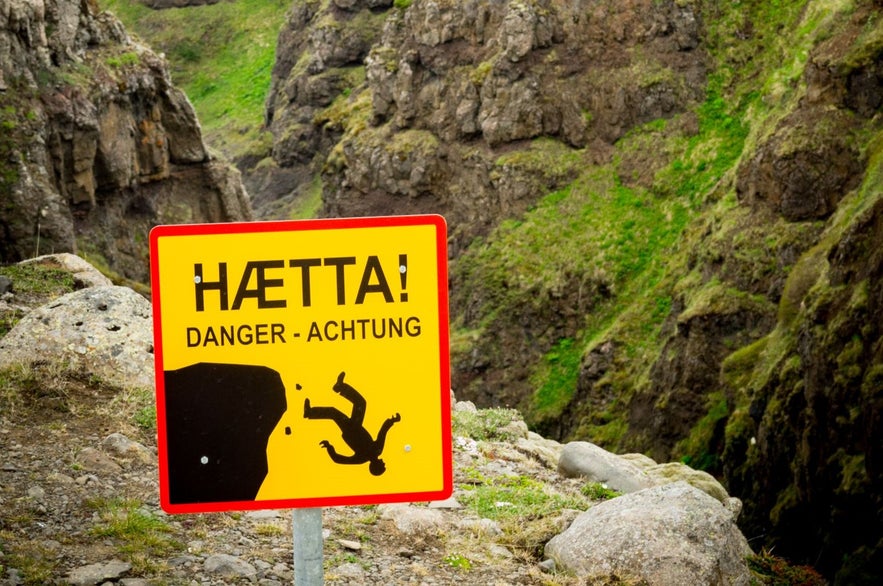 While there are many dangers in Iceland, the biggest and most important one is failing to be aware.
While there are many dangers in Iceland, the biggest and most important one is failing to be aware.
You must prepare for your trip with safety in mind first. Make sure when traveling around that you heed our advice in this article while also staying on top of the latest weather and road conditions daily. Also, make sure that you come dressed for the terrain, ensuring you remain as warm and dry as possible in any potential turn of events. Don't ignore local advice or warning signs under any circumstances.
Whether you're traveling the island on a self-drive adventure, planning to join guided tours, or just taking a city break to our outstanding capital, respect the rules and take our safety advice. We hope you have a wonderful stay in Iceland, make memories, enjoy once-in-a-lifetime experiences, and stay safe! We'd love to answer any questions or hear about any experiences you've had in the comments below.


